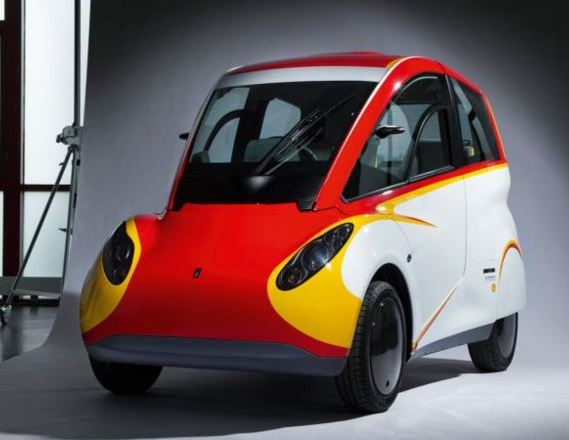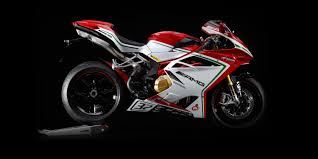RE: Light IS Right: PH Blog
Discussion
robinessex said:
Tuna said:
Up to a point.. after that you're struggling to manage NVH. You might have a very fast driver's car, but you'll only be driving it with a crash helmet, and you won't have any passengers.
It seems to me the 911 and Evora prove the point that if you want a comfortable 'GT' experience, the amount of sound deadening, and solidity of touch points start to dominate the weight. When the chassis is only a few tens of kilos, even if you switch to weightless unobtanium, you're only going to save a few tens of kilos.
My understanding of the aluminium chassis thing is that while Alu is lighter, for a given strength of beam you need a similar weight to an equivalent steel item. The advantage to smaller manufacturers is that an extruded and glued aluminium chassis is cheap to develop and to set up tools for - but the expense is then passed on to customers for each and every model they buy. It's great for niche items, no good for mass production.
The stiffness to weight ratio for aluminium, steel, and titanium is THE SAME. So to 'gain lightness' but not loose stiffness, in structural terms, have to adjust the section modulus. Carbon has much better stiffness to mass ratio, so in that context, you are onto a winner. But I won't go into buckling, because it starts to get hairy.It seems to me the 911 and Evora prove the point that if you want a comfortable 'GT' experience, the amount of sound deadening, and solidity of touch points start to dominate the weight. When the chassis is only a few tens of kilos, even if you switch to weightless unobtanium, you're only going to save a few tens of kilos.
My understanding of the aluminium chassis thing is that while Alu is lighter, for a given strength of beam you need a similar weight to an equivalent steel item. The advantage to smaller manufacturers is that an extruded and glued aluminium chassis is cheap to develop and to set up tools for - but the expense is then passed on to customers for each and every model they buy. It's great for niche items, no good for mass production.

The route of modulus over density line will give lowest weight under buckling. Which will generally send you towards light materials. However metals can be formed into thin walled tubes which you can't do with a foam.
Unless you're looking at a cable or a pressure vessel in practice you end up with durability, toughness, strength of joins or the ability to form the material into the must efficient geometry.
The long and short of it is that for an optimised structure such as an airframe the weight saving from going from aluminium to carbon fibre is in the region of 20%. Much less than you'd expect from the six times stronger than steel and a third of the weight material.
For a 1500kg car the body in white would be around 375kg so a full cf chassis would save you around 70kg.
In practice getting weight out of a car is mostly about detail design of the body and the components. Probably the best example of this is the MX5, it's very light given its accommodation and engine size. It's built out of steel but this is more than offset because as it has the production volume of any sports car it also has the highest development budget.
Talksteer said:
robinessex said:
Tuna said:
Up to a point.. after that you're struggling to manage NVH. You might have a very fast driver's car, but you'll only be driving it with a crash helmet, and you won't have any passengers.
It seems to me the 911 and Evora prove the point that if you want a comfortable 'GT' experience, the amount of sound deadening, and solidity of touch points start to dominate the weight. When the chassis is only a few tens of kilos, even if you switch to weightless unobtanium, you're only going to save a few tens of kilos.
My understanding of the aluminium chassis thing is that while Alu is lighter, for a given strength of beam you need a similar weight to an equivalent steel item. The advantage to smaller manufacturers is that an extruded and glued aluminium chassis is cheap to develop and to set up tools for - but the expense is then passed on to customers for each and every model they buy. It's great for niche items, no good for mass production.
The stiffness to weight ratio for aluminium, steel, and titanium is THE SAME. So to 'gain lightness' but not loose stiffness, in structural terms, have to adjust the section modulus. Carbon has much better stiffness to mass ratio, so in that context, you are onto a winner. But I won't go into buckling, because it starts to get hairy.It seems to me the 911 and Evora prove the point that if you want a comfortable 'GT' experience, the amount of sound deadening, and solidity of touch points start to dominate the weight. When the chassis is only a few tens of kilos, even if you switch to weightless unobtanium, you're only going to save a few tens of kilos.
My understanding of the aluminium chassis thing is that while Alu is lighter, for a given strength of beam you need a similar weight to an equivalent steel item. The advantage to smaller manufacturers is that an extruded and glued aluminium chassis is cheap to develop and to set up tools for - but the expense is then passed on to customers for each and every model they buy. It's great for niche items, no good for mass production.

The route of modulus over density line will give lowest weight under buckling. Which will generally send you towards light materials. However metals can be formed into thin walled tubes which you can't do with a foam.
Unless you're looking at a cable or a pressure vessel in practice you end up with durability, toughness, strength of joins or the ability to form the material into the must efficient geometry.
The long and short of it is that for an optimised structure such as an airframe the weight saving from going from aluminium to carbon fibre is in the region of 20%. Much less than you'd expect from the six times stronger than steel and a third of the weight material.
For a 1500kg car the body in white would be around 375kg so a full cf chassis would save you around 70kg.
In practice getting weight out of a car is mostly about detail design of the body and the components. Probably the best example of this is the MX5, it's very light given its accommodation and engine size. It's built out of steel but this is more than offset because as it has the production volume of any sports car it also has the highest development budget.
kambites said:
It must depend massively on the car and what degree of usability and reliability you're intending to maintain. Cutting 20% off the weight of the average modern road car is pretty easy; cutting 20% without significantly impacting NVH and/or practicality is generally either very difficult or very expensive.
I don't agree that cutting 20% off the weight is pretty easy, the E46 M3 -> CSL went from 1570kg (EU1) to 1460kg and that's with CF roof/bumpers/interior, non electric seats, thinner glass, no AC, less sound deadening, cardboard boot floor ;-) etc etc - must have cost them a fortune to save circa 110kg. There were a very long list of changes. (And yes NVH obv worse/better!). IIRC the lightweight Ferrari's shed a similar amount. Makes the mx-5's achievement remarkable IMO.Edited by kambites on Friday 29th April 18:06
Edited by danp on Friday 6th May 10:22
danp said:
I don't agree that cutting 20% off the weight is pretty easy, the E46 M3 -> CSL went from 1570kg (EU1) to 1460kg and that's with CF roof/bumpers/interior, non electric seats, thinner glass, no AC, less sound deadening, cardboard boot floor ;-) etc etc - must have cost them a fortune to save circa 110kg. There were a very long list of changes. IIRC the lightweight Ferrari's shed a similar amount. Makes the mx-5's achievement remarkable IMO.
Well yes that's my point - it was hard because they wanted to keep the usability.If you give me an E46, I'll strip 200kg out in a day and it'll still be drivable. Not pleasant to drive, but drivable. Just removing all the seats and carpets and replacing the driver's seat with a fixed-back bucket gives you about 150kg in an E46, IIRC.
kambites said:
Well yes that's my point - it was hard because they wanted to keep the usability.
If you give me an E46, I'll strip 200kg out in a day and it'll still be drivable. Not pleasant to drive, but drivable. Just removing all the seats and replacing the driver's seat with a fixed-back bucket gives you about 150kg in an E46, IIRC.
Well that's a challenge, I'll have a look on eBay later for a candidate ;-)If you give me an E46, I'll strip 200kg out in a day and it'll still be drivable. Not pleasant to drive, but drivable. Just removing all the seats and replacing the driver's seat with a fixed-back bucket gives you about 150kg in an E46, IIRC.
danp said:
kambites said:
Well yes that's my point - it was hard because they wanted to keep the usability.
If you give me an E46, I'll strip 200kg out in a day and it'll still be drivable. Not pleasant to drive, but drivable. Just removing all the seats and replacing the driver's seat with a fixed-back bucket gives you about 150kg in an E46, IIRC.
Well that's a challenge, I'll have a look on eBay later for a candidate ;-)If you give me an E46, I'll strip 200kg out in a day and it'll still be drivable. Not pleasant to drive, but drivable. Just removing all the seats and replacing the driver's seat with a fixed-back bucket gives you about 150kg in an E46, IIRC.

I know of a number of E46 track cars out there running at around the 1250-1300kg sort of weight without having had a huge amount spent on them. That's the thing though, they're track cars; you'd never want to drive one any significant distance on the road.
Edited by kambites on Friday 6th May 10:28
Mark77a said:
GetCarter said:
 I'll be showing this to Gordon Murray next week. Show him where he's been going wrong all these years.
I'll be showing this to Gordon Murray next week. Show him where he's been going wrong all these years.
I'm sure its GREAT engineering and fabulous handling, AND amazing lightweight (to stay on topic)
But seriously, would even the least style aware, P-Head be seen dead in it ??? :-)
Gassing Station | General Gassing | Top of Page | What's New | My Stuff






